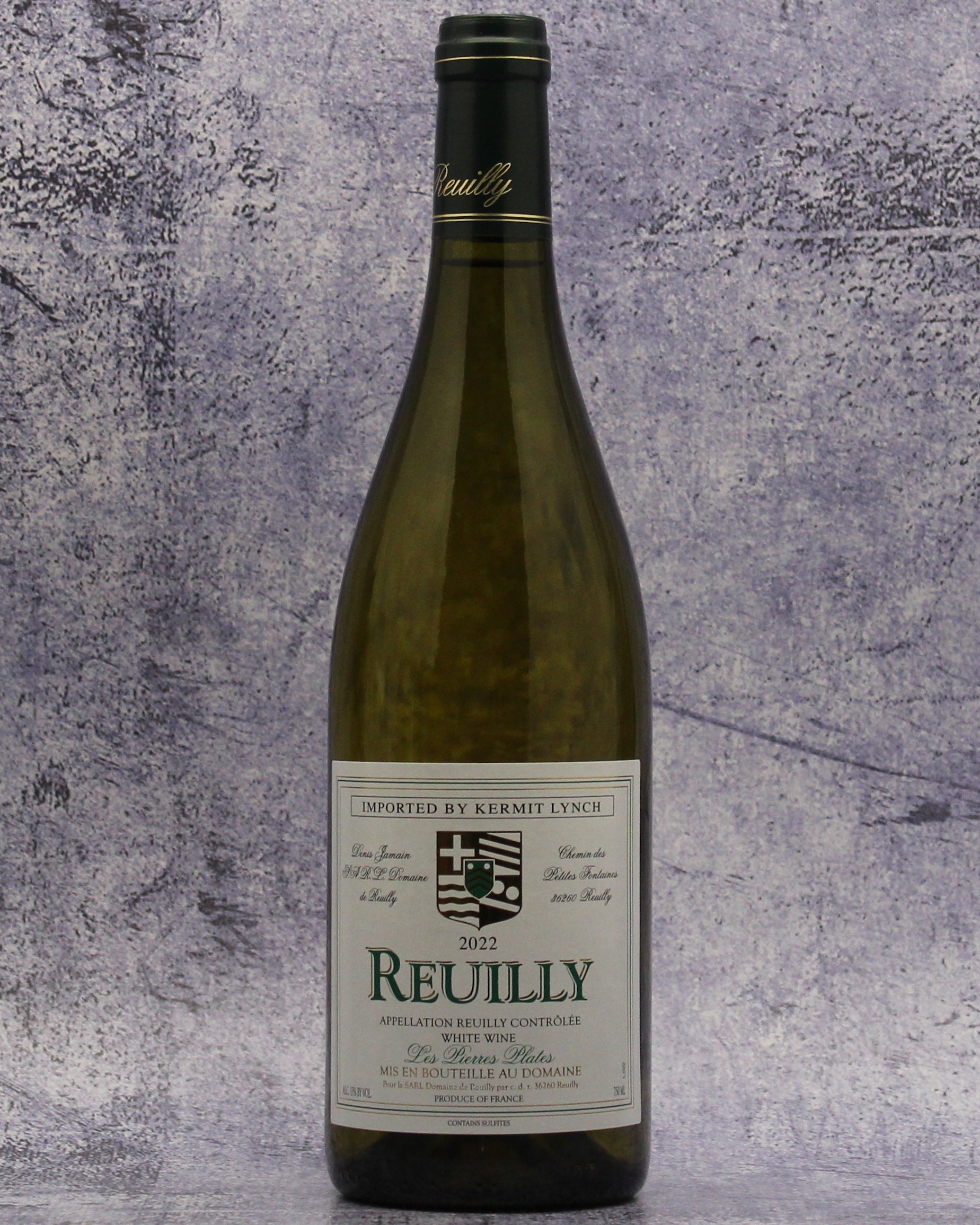From: Reuilly, Loire Valley, France
Varietal: Sauvignon Blanc
Taste: You might do a double take after your first sip of this mouthwatering blanc from Domaine de Reuilly and wonder, “Is this Chablis?” It is not Chardonnay from Chablis, but Sauvignon Blanc from the eastern slice of the Loire region! Like the best Burgundian Chardonnay, however, this Sauvignon Blanc serves to transmit its Reuilly-ness more than its Sauvignon Blanc-ness. Instead of tropical, heavily grassy notes, you get a lean, chiseled frame with hints of crushed rock and citrus. The limestone parcel where it originates is called “Les Pierres Plates”—the flat stones—which is filled with fossilized shells from the Kimmeridgian period, when France was covered by ocean. Where you find this soil in Chablis and parts of Champagne, you also find bone-dry, flinty, almost saline wines that are the soulmates of shellfish. Denis Jamain of Domaine de Reuilly farms organically and biodynamically, which allows this single-vineyard Sauvignon’s minéralité to sing its purest song.
—Tom Wolf
Pairing: Go fresh with this wine. Shellfish or white fish, asparagus, goat cheese, risotto with asparagus or peas (keep going for the recipe), fresh leafy greens, sushi, and anything that makes you crave spring flavors. Some other pairing ideas include serving this with herb-marinated seared tofu, goat cheese and asparagus tart, polenta with asparagus, peas & mint, fried halibut tacos, smoked trout Rillettes, flounder with herb-blossom butter, and even corn and shrimp beignets.
About: When tasting the wines of Denis Jamain, it is clear that the appellation of Reuilly, in the eastern Loire, is experiencing a renaissance, moving far beyond its former status as the “poor man’s Sancerre.” This land was once a source of great pride, having been part of a gift of the 7th century king, Dagobert, to the Royal Abbey of Saint Denis. Phylloxera had ravaged the majority of the vineyards here in the late 19th century, but Camille Rousseau (Denis’ maternal grandfather) had faith in the future of Reuilly. In 1935, he planted his first vines here, in addition to farming a large oak forest on the outskirts of town.

